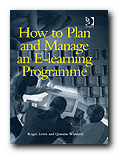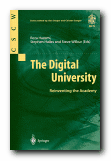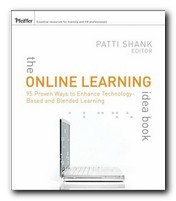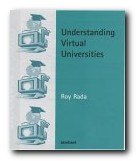80 effective recipes for creating online learning materials
Moodle has now established itself as the de facto standard eLearning software tool in further and higher education. It’s an open source program (which means it’s free) and it also acts as a virtual learning environment (VLE) which makes expensive alternatives such as Blackboard redundant. If anybody tells you it’s an easy software program to use, they’re lying. Most people will need all the help they can get, even if they are putting some ready-made course materials into Moodle’s default templates. That’s why books such as this Moodle English Teacher Cookbook guide to course creation exist – to explain the principles of eLearning design at the same time as offering a guided tour of some Moodle features.
 English Teacher’s Cookbook is aimed at classroom teachers of English for comprehension, writing skills, and composition – but in fact the techniques it demonstrates would be applicable in any humanities subject. Unlike many other guidance manuals it doesn’t bother explaining all of Moodle’s features, but instead plunges immediately into constructing modules of learning using a variety of supplementary programs such as Hot Potatoes and Microsoft Word, and Open Office
English Teacher’s Cookbook is aimed at classroom teachers of English for comprehension, writing skills, and composition – but in fact the techniques it demonstrates would be applicable in any humanities subject. Unlike many other guidance manuals it doesn’t bother explaining all of Moodle’s features, but instead plunges immediately into constructing modules of learning using a variety of supplementary programs such as Hot Potatoes and Microsoft Word, and Open Office
Silvina Hillar starts out with simple exercises, such as ‘matching sentences’ (which is actually a misnomer and should be ‘matching sentence parts) then creating learning journals, discussing responses in a forum, comparing notes, and constructing story boards.
I was a surprised that there was so little on the pedagogy behind the task, but her entire focus is on showing how to get it done in Moodle – or Let’s Moodle it! as she keeps repeating. This means lots of screenshots showing you what to enter into each dialogue box, and which menu options to choose. If you’re not experienced in using Moodle, you will find these very helpful.
Many of the stages of course creation involve entering small items of information into a data base using forms. There is quite a conceptual gap between the data entry process and what eventually appears on screen as the final result to a user. You should expect to find this quite arduous at first, but then straightforward once you’ve done it a few times.
There are lots of different types of quizzes possible – missing words, multiple choice questions, matching words, or matching pictures to text – and you can also shuffle questions so that no two people see them in the same order (which I can assure you helps to minimize copying by students using adjacent screens).
Moodle has a lot of different learning activities (the quiz, lesson, survey, journal, wiki, forum) and it’s as well to know exactly what each one does, as well as the differences between them. The strength of Hillar’s approach is that she demonstrates how to use each of these options, and what the dialogue boxes look like on screen as you fill them with choices and information. The only weakness is that she doesn’t always show what the finished learning object will look like when accessed by the learner.
Another weakness of her approach is that many of the projects require outcomes to be read, assessed, and marked manually by a teacher. This not only fails to take advantage of the interactivities and the record-keeping features within Moodle, but gives the teacher an extra task for which many of them will not thank you.
However, to offset this, there’s plenty on embedding interactive materials from elsewhere – which is the quickest way to build course modules. Sources include other web sites, video from YouTube and Vimeo, and animated quizzes and games from what2learn.com. Almost all the third-party software she uses is open source or free to use.
Pedagogically, the examples are designed to provide a wide range of activities encouraging students to write – something that many of them (especially teenagers) are notoriously reluctant to do. There’s very little in here that couldn’t be done in a traditional manner with photocopied handouts – but the important feature of Moodle if you can incorporate it into your own learning modules is that it’s also a mechanism for marking and storing the results of student’s work.
Later chapters deal with discussing fictional characters, sentence and paragraph construction, and (keeping matters as fashionable and smack up to date as possible) how to integrate social media such as Twitter and FaceBook into Moodle courses. There’s also an entire chapter dealing with mind maps and tree diagrams – something I have never found convincing as a mechanism for learning, but which I know many people find reassuring.
I have been critical of some Moodle guides in the past. That’s because most of them are not much more than an explanation of Moodle features, but no suggestions about how they might be used to create dynamic eLearning courses, exploiting the interactivity that Moodle offers. This book is far more useful, because it approaches these issues the other way round. It starts with the premise of online learning design, then shows how it can be done using Moodle.
© Roy Johnson 2010
Silvina P. Hillar, Moodle English Teacher’s Cookbook, Birmingham: Pakt Publishing, 2010, pp.207, ISBN: 1849510881
More on online learning
More on technology
More on digital media
More on web design
More on computers
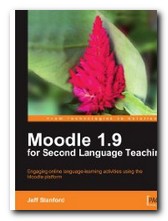


 Laurel Alexander, Education & Training on the Internet: An essential source for students, teachers and education providers, Plymouth: Internet Handbooks, 2000, pp. 192, IBSN 1840253460. Guide to online resources for students and tutors. Exstensive listings of online courses in UK and abroad.
Laurel Alexander, Education & Training on the Internet: An essential source for students, teachers and education providers, Plymouth: Internet Handbooks, 2000, pp. 192, IBSN 1840253460. Guide to online resources for students and tutors. Exstensive listings of online courses in UK and abroad.
